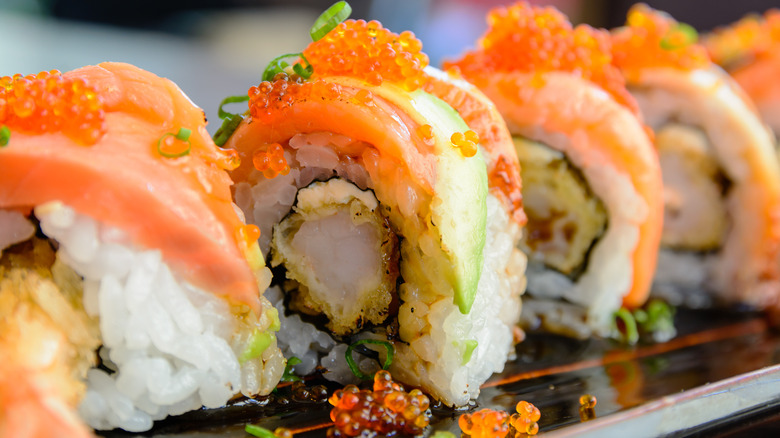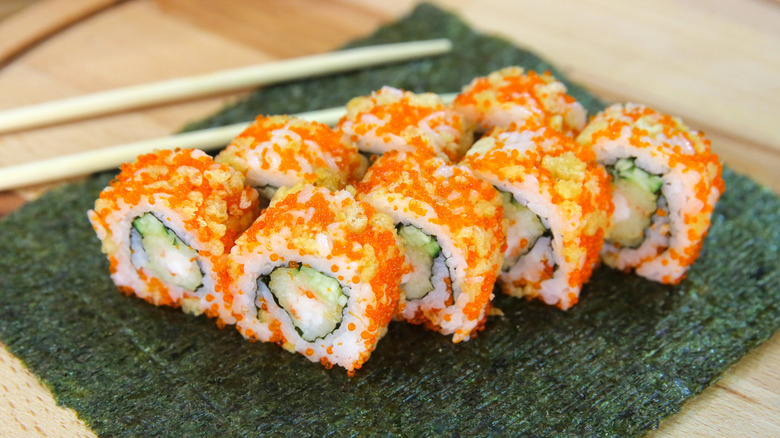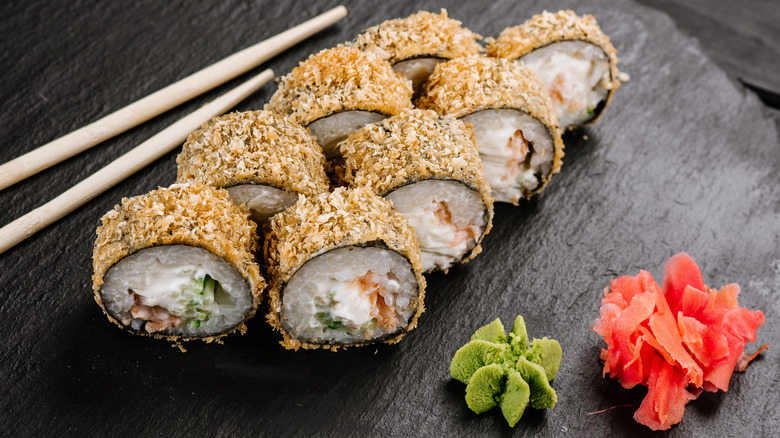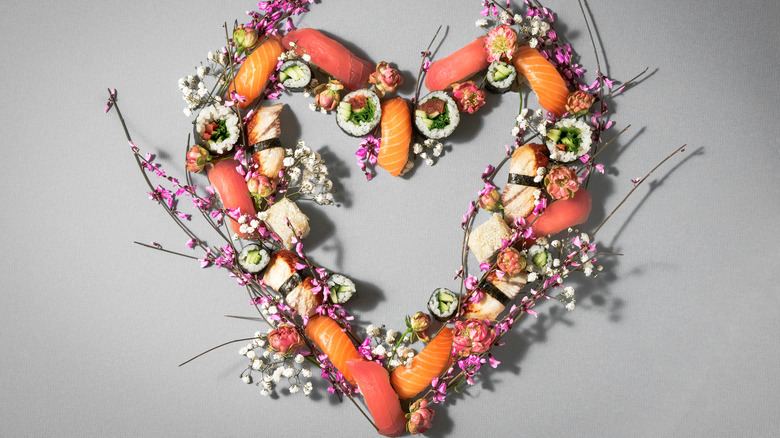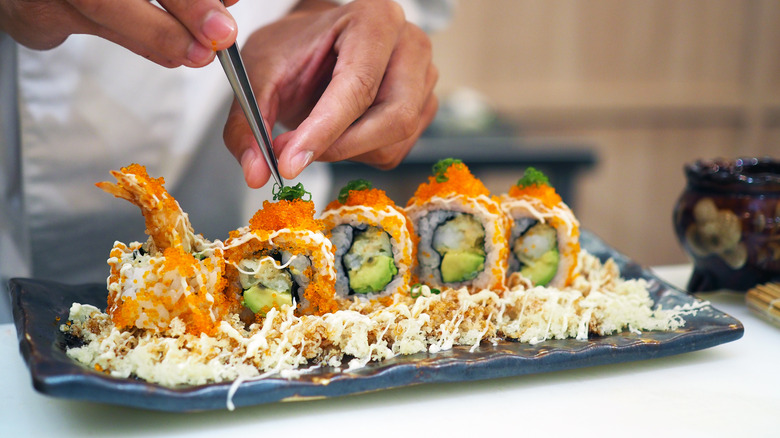Tempura Roll: What You Should Know Before Ordering
If you're a fan of sushi, it's likely you have your preferred sushi restaurant or a few locations and favorite menu items in mind. Of course, sushi in the United States is a bit different than in Japan. Sushi rolls are common, and with plenty of options on offer, menus can be fairly long thanks to the many varieties and possibilities. The foundation of most sushi rolls is nori and rice, but the ingredients and how they are rolled make each one different.
Tempura rolls are a common item you'll find in most sushi spots. Some tempura rolls are known as shrimp tempura rolls because there is fried shrimp inside the roll, but not all tempura rolls include shrimp. It's possible that a tempura roll has veggies or other types of fish that are covered in a batter and then deep-fried before being assembled into a delicious roll.
What ingredients are used in a tempura roll?
Tempura rolls are similar to inside-out rolls since the rice is on the outside instead of on the inside, according to Tablespoon. These rolls are often compared to the California roll because of how they are assembled and prepared. They both typically have avocado and cucumber in addition to the seaweed wrapper — also known as nori — and rice.
Tempura may be made with fish, seafood, or vegetables, such as sweet potato and zucchini, according to DelightedCooking. When ordering, you'll want to ask what they use to make their tempura roll since each restaurant is likely to use different ingredients. Now, if you're curious about what's in the tempura batter, it typically consists of flour, eggs, and cold water. According to DelightedCooking, the goal of tempura "is to get a crispy, crunchy outside interior while maintaining the freshness and softness of the inside." The fried tempura adds a nice crunch and texture to this type of sushi roll.
Do tempura rolls have raw fish?
If you're not a fan of raw fish, these rolls are a delicious option because the tempura filling is deep-fried, whether it's shrimp, fish, or veggies. But because each restaurant has its own style in making its tempura rolls, it's a good idea to check with the server or sushi chef about how they make their version. Notably, some places mix raw fish alongside the deep-fried tempura filling depending on the inspiration and creativity of the sushi chef, according to DelightedCooking.
If you're unsure whether you can swallow the idea of eating raw fish in a sushi roll, tempura rolls can be a good way to ease in. Indeed, even if they mix fresh, uncooked fish in the roll, it's likely to be less noticeable when you take a bite because of the variety of textures and flavors from the other ingredients.
What are the nutrition facts?
You might be questioning the healthiness of deep-fried food in your sushi. Tempura — whether it's vegetables, shrimp, or fish — is covered in batter and then fried in oil, meaning it will have more calories and fat than non-fried sushi options, per Livestrong. But before you consider scratching this type of sushi roll from your favorites list, especially if you're a fan, eating this roll every now and again is considered okay. However, it's important to know that this roll contains a lot of calories, fat, and sodium. According to Eatthismuch, eight pieces of tempura rolls contain 540 calories, 12 grams of fat (with 5 grams that are saturated fat), 82 grams of carbohydrates, and 1120 grams of sodium.
In general, fried food should be consumed in moderation because it's higher in fat and calories (via Livestrong), and a tempura roll is no exception. Basically, if you eat a variety of vegetables, fruits, grains, and some meat or seafood — and you don't have any other health issues — you can enjoy fried foods occasionally. But if your goal is to eat a healthier diet, then opting for other sushi rolls that don't have fried fish or vegetables is a better choice.
How are tempura rolls made?
Tempura rolls are made similarly to other rolls and require some advance planning. Before the sushi chef gets started, they need a pot of freshly-made sushi rice that is cooled. From here, they begin assembling rolls on a bamboo mat. Then they will add a layer of rice and place the seaweed wrapper on top before laying on the tempura, avocado, and cucumber, according to DelightedCooking. Once everything is neatly and carefully layered, the chef will begin carefully rolling to ensure everything stays inside the roll. Once it's tightly rolled, they will slice the long roll into one-inch slices, creating the perfect size to place into your mouth in one bite or carefully bite into. These beautiful creations are usually served on slate or ceramic plates and accompanied with ginger and wasabi. When served at your table, it's common to pick up each sushi roll with chopsticks in place of a fork or fingers.
